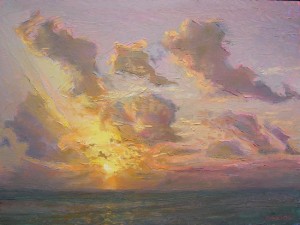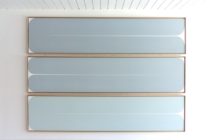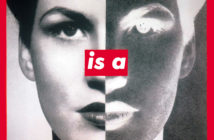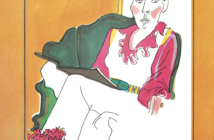Dear Artist,
I recently returned from travelling to find a pile of mail gems, many from readers of these letters. One was a gift of a small paperback postmarked Crescent Pond, New Hampshire. I crawled into bed and into a list of timeless painting tips ordered by importance, the essentials highlighted and supported with first-hand insights from old and modern masters.
Painters of classical realism employ this list as the backbone of good painting. However, what could be mistaken for the techniques of a niche are in fact the foundation of all visual art, and while these basics have been almost completely edged out of the art school circuit, an aspiring painter can still independently mine golden nuggets from classical painting to produce work of deeper knowledge and skill, regardless of style or stripes.
When I sat down at my first potter’s wheel at age twelve, my teacher said, “You are putting on your first pair of skis, and you do not yet know how to ski.” And so tonight I started again at the beginning. There are two fundamental approaches to realistic painting, the book began: An academic renders each item in detail, inserting her knowledge of anatomy, colour, religion, myth, and history as an enhancement to what she sees with her own eyes. While this idealism delivers the details of nature with accuracy, it isn’t necessarily the truth. An impressionist, by comparison, grabs the whole subject at once and paints a broad, visual experience of it. She honours the poetry of the human eye and its cherry-picking of colour, nuance and focus. The impressionist forgets what she knows in order to paint what she sees.
The notebook then broke into sections to clarify the academic principles of drawing and composition. Design, proportion, visual unity, spotting, simplification, rhythm, eye control, edgemanship and carrying power, plus light and reflected light, shadows, highlights and accuracy of values and shapes were laid out like a set of life-saving lug nuts. Then began an item-by-item exploration of what makes a painting a visual “impression,” and why. “The artist sees objects as smudges of warm and cool colours of different shapes and values and having only a suggestion of detail. He sees the edges of objects fuse in places to form broader and simpler masses of light and shadow.” (Richard Whitney, Painting the Visual Impression)
Sincerely,
Sara
PS: “I must make myself fully aware that I know nothing. It is the only way to get ahead.” (Edgar Degas)
Esoterica: Richard Whitney graduated from the University of New Hampshire in 1968 and studied with classical realist R.H. Ives Gammell before building a lifelong career in portraiture and landscape painting. In 2014, Whitney compiled his notes on the teachings of his mentor, Gammell, who had himself been given the knowledge by his early-twentieth century mentors from the Boston School of American Impressionists. Whitney sees these notes as ideas handed down from Master to student, from generation to generation, now compacted for memorization and understanding. “Learning to paint involves learning to see, and guidance from a master craftsman is necessary,” wrote Whitney. “This book should be used as a supplement to studio instruction. It can easily fit in a paint box.”
You can reach Richard Whitney here.
Download the new audio book, The Letters: Vol. 1 and 2, narrated by Dave Genn, here. Proceeds of sales contribute to the production of The Painter’s Keys.
“The secret is to follow the advice the masters give you in their works while doing something different from them.” (Edgar Degas)
Featured Artist
Capturing the beauty of nature and expressing those impressions in oil paint is a joy. Every hour of the day presents new possibilities and keeps even the same landscape location, same composition, an ongoing and beckoning challenge. For this reason, I love painting series: it is exploration made visual.









13 Comments
I love the Buddhist philosophy of ‘beginner’s mind’. It opens up all the possibilities. (And I was disappointed that my own post-secondary art education was heavy on theory and light on technical mastery and the elements/principles of design. I prefer to begin and the beginning.)
Thank you Sara so much for mentioning my book. I quickly sold out on Amazon and they will not let anyone order the book when it is out of stock. I have ordered more books from my publisher and hope to receive them around October 10th. I would ask your readers to please send me a check for $28 which includes S&H and include your email address so I can send you the tracking number when I send you my book. Thank you!!
Richard Whitney, PhD.H
100 Chalet Drive,
Stoddard, NH 03464
Richard
Are you able to accept orders from Canada?
Thank you, Sara, and thank you, Mr Whitney. I am sending my check!
Just as artists refine their skills to distinguish subtle nuances in color and shape, using tools like the Hydrogen Executor can similarly enhance one’s ability to execute precise digital tasks with ease.
To ensure optimal performance in your digital projects, integrating the
Hydrogen Executor into your workflow can be as transformative as an artist mastering their color palette.
Definitely inspiring thoughts on ways to think about art. I especially liked the comment about how we view a subject from our our own knowledge of religion, mythology and history. A lot to think about right there. For all of us pastel painters, though, I have to point out that Mary Cassatt at the Louvre is a pastel painting. There is a lot of great art, including the old masters which were not completed in oil.
“I must make myself fully aware that I know nothing. It is the only way to get ahead.” I think I know what Degas meant, I try to approach each new painting as if it’s my first.
I was just reading in “Born Under Saturn” by Rudoph and Margo Wittkower about the academic artist and writer Joachim von Sandrart (1606-1688) deploring the fact that Rembrandt, who had never been to Rome where he could have studied antiquities and art theory, “argued against the academies which are so very necessary to our profession, reasoning that one should only, and exclusively, follow nature and no other rules.” Rembrandt was considered a failure by his academically-minded contemporaries, whose names we have forgotten.
Each new work has its own set of rules to be discovered. Or not.
It is difficult for us to know nothing, the mind is a noisy busy cluttered place chattering on endlessly. Rather than “think” to know nothing, observe you thoughts objectively. No nothing in not having judgement, no right or wrong. Your awareness and all in it need not be rejected but observed objectively. And we have to keep a vigilance over it. Bias and judgement are ever sneaking in and settling it’s feet under our table. Not in the dictionary, but I would define awareness as mindful attention.
I feel as if you read my mind and put it into words.
Thank youMarie Lewis
Oh my!! Thank you so much! The Degas quote and the quotes from Whitney’s book were the perfect words for me to read today. Here I was beating myself up thinking “Why can’t settle on a set technique for painting? Why am I so slow and meticulous, approaching each portion of a painting as if I had never done it before?” Well… I haven’t! Each painting is a new venture with new light, color and subject! Light bulb moment!Thank you Sara!!
More books have arrived and are now available on Amazon or directly from me. I can also send my book to
Canada but unfortunately it costs more to ship it than it costs to buy it. If money is an issue I would suggest getting my ebook instead. Again, thank you Sara so much!!
For those living in Canada, please order my book directly from me. Amazon does not handle book sales to Canada. The cost is $40 which includes S&H. My address is: 100 Chalet Drive, Stoddard, NH 03464. I want to thank all of you who have ordered my book and Sara for bringing it to your attention.